Genealogy
Family Tree: Our French Ancestors
Many members of Rochambeau Chapter, NSDAR, are direct descendants of French Patriots who fought alongside American Patriots in the War of American Independence.
Many associate members of Rochambeau Chapter, NSDAR, as well as other members of the NSDAR, have direct links with France and would like to know more about their French ancestors.
Born: Vendôme, 1725 – Died: Thoré (Loir-et-Cher), 1807
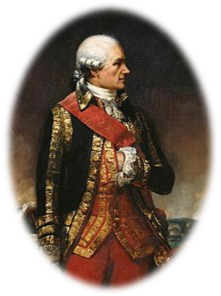
A descendant of an old family in the Vendôme area, Rochambeau entered the king’s service at the age of 17 and took part in various military campaigns during the reigns of Louis XV and Louis XVI.
During the War of Austrian Succession, in which he achieved the rank of Colonel, Rochambeau won distinction at the Battles of Raucoux (1746) and Lauffeld (1747).
During the Seven Years’ War (known in the United States as the French and Indian War), Rochambeau commanded the Auvergne Regiment and won glory at the Battle of Clostercamp (1760). He served as Inspector General of the Infantry in 1761 and was appointed Governor of Villefranche-en-Roussillon in 1776 and Governor of Vendôme in 1779.
In 1780, Louis XVI promoted Rochambeau to Lieutenant General and entrusted him with the command of 6,000 soldiers sent to North America to support the Colonists in their revolt against England. In June 1781 Rochambeau joined forces with General George Washington in White Plains, New York and together they made a swift descent to Yorktown, Virginia, where French and American forces under the command of the Marquis de Lafayette were harassing the British. With the aid of French naval forces under French Admiral de Grasse, the French American forces laid siege to Lord Cornwallis’ forces, bottled them up on the peninsula, and forced Cornwallis to surrender on October 19, thus virtually ending the American War of Independence.
Upon his return to France, Rochambeau was made Chevalier du Saint Esprit (1783); then, Governor of Picardy (1784); and finally, Governor of Alsace (1789). Rallying to the French Revolution, he was placed at the head of the Army of the North (1790-1791) and was elevated to the title of Maréchal de France. Following a disagreement with General Charles-François du Périer Dumouriez, Rochambeau resigned and retired to Vendôme. He was arrested during the Reign of Terror and was incarcerated in the Conciergerie in Paris. He was released after the Thermidorian Reaction (1794).
Rochambeau left us his “Mémoires Militaires, Historiques et Politiques,” published in 1809.
Rochambeau’s significant contribution to the achievement of victory in the American War of Independence inspired the Paris chapter of the Daughters of the American Revolution to name their chapter in his honor.
Born: Ruffec, 1719 – Died: Saint-Jean-d’Angély, 1781
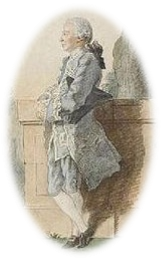
After a short military career, Broglie was appointed France’s ambassador to Poland and became, at the age of 35, head of the Secret du Roi, the private—as distinct from the official—diplomatic service of Louis XV.
Broglie led the king’s secret service during the Seven Years’ War (1756-1763), and, even when exiled, continued to advise the king until 1774. Broglie devised a plan to land in England in 1763. With his brother, Victor-François, Maréchal de France, and with the support of enemies of the Duc de Choiseul, Minister of Foreign Affairs, Broglie led a plot against the king’s minister.
Broglie later fell out of favor when Louis XVI came to the throne. Unlike his predecessor, Louis XV, the new king had no intention of maintaining a system of parallel diplomacy. He therefore dispatched Broglie to Metz to serve alongside his brother, Victor-François, who had been in command there since 1771.
Known as the “King of Americans,” Broglie took an interest in the early warning signs and development of the American War of Independence and organized the departure of French volunteers to America.
Broglie is a member of the Society of the Cincinnati.
He died in 1781, the year of the turning point of the American War of Independence.
Born: Chavaniac (Auvergne),1757 – Died: Paris, 1834
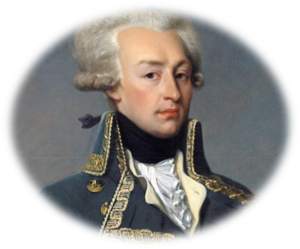
An officer of the French Army’s Dragons de Noailles, Lafayette first learned about the revolt of the American Patriots in August 1775 during a dinner organized by the Comte de Broglie with the Duke of Gloucester, brother of the King of England. At the time, Louis XVI, King of France, secretly supported the American Patriots. From then on, Lafayette dreamed of glory and a great military destiny for himself.
On December 7, 1776, Lafayette signed a secret agreement to defend the Patriots, “au nom d’une liberté que j’idolâtre” (“in the name of liberty that I worship”). At the age of 19, he set sail aboard La Victoire and arrived in South Inlet near Georgetown, South Carolina on June 13, 1777. After some convincing, the Continental Congress finally granted Lafayette a commission as a non-paid Major General in the Continental Army under the command of General George Washington.
Lafayette was injured at the Battle of Brandywine in 1777 and played key roles at the Battles of Barren Hill, Monmouth, and Rhode Island in 1778. Following the formal Treaty of Alliance with France in February 1778 and Britain’s subsequent declaration of war, Lafayette returned to Paris in 1779 to lobby Louis XVI for an increase in French support. During his six-month sojourn in his home country, Lafayette proved to be an excellent advocate for the Patriot cause.
In March 1780 he returned to the American colonies aboard the Hermione, bearing news of French reinforcements of 5,500 men and five frigates. The following year, Lafayette led a six-month harassment campaign against the British in Yorktown. His actions paved the way for decisive victory by a combined force of Continental Army troops led by General Washington and French troops led by the Comte de Rochambeau. The Patriot victory at Yorktown was the last major land battle of the American War of Independence and prompted the British government to negotiate an end to the conflict.
In 1824, when he was invited to return to the United States as the last surviving general from the American War of Independence, Lafayette was given a hero’s triumphant welcome all along his year-long journey. He is one of a very few foreigners to have been proclaimed an honorary citizen of the United States.
Lafayette is a member of the Society of Cincinnati.
Born: San Domingue, 1759 – Died: Paris, 1805
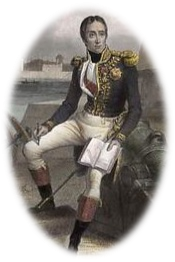
Etienne-Eustache de Bruix was born in Saint-Domingue on July 17, 1759. At a very young age, he joined the French Navy and was promoted to the rank of Ensign when he was 19 years old.
He was 21 years old when the Battle of Chesapeake broke out. He was placed under the orders of Admiral de Guichen, on La Boudeuse, after which he joined Admiral Louis de Bougainville’s ship, l’Auguste, in a squadron under the orders of French Rear Admiral François Joseph Paul, Comte de Grasse.
Following the American War of Independence, Bruix, along with Antoine Hyacinthe Anne Chastenet de Puységur, was assigned the task of re-mapping the island of Saint-Domingue.
When the French Revolution broke out in 1789, Bruix was criticized because of his aristocratic origins and was relieved of his duties as a naval officer. The next year he was reappointed to his post by Admiral Laurent Jean François Truguet. Bruix’s participation in the Battle of Croix (1795) brought him in contact with General Lazarre Hoche and led to his 14-month appointment at the Ministry of the Navy and the Colonies (April 1798-June 1799).
When General Napoléon Bonaparte returned from his campaign in Egypt in October 1799, Bruix was informed in secret of the impending coup d’état. After the successful coup, Bruix was appointed as an officer in the French Navy and rose in rank. In 1801, he was named Admiral of the Naval Army. The following year, Bruix’s health began to decline. Nevertheless, in 1802 he was promoted to State Advisor, then named Commander in Chief of the Boulogne Fleet, from July 15, 1803, until his death on April 4, 1805.
During the year-and-a-half he spent in Boulogne, Bruix challenged Napoléon on at least two occasions. In one instance, when a storm was announced Bruix refused to obey orders and organize a ship revue. However, Napoléon refused to cancel the event and 200 men were lost at sea.
Bruix was promoted to the rank of Officer of the Empire on August 16, 1804, during the famous Legion of Honor ceremony held in Boulogne.
The last time he attended an historic public event was on the occasion of the coronation ceremony of the Emperor Napoléon Bonaparte in December 1804.
On February 2, 1805, as Inspector General of the Ocean Coasts, Bruix was promoted to the rank of Grand Eagle of the Legion of Honor. He died in Paris shortly after, at the age of 46. One can still visit his grave in Père Lachaise cemetery in Paris.
Bruix is a member of the Society of Cincinnati.
Born: Ravel, November 4, 1829 – Died: Paris, April 28, 1794
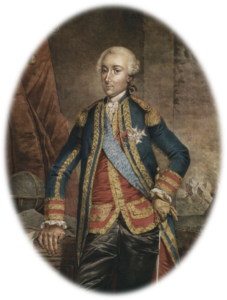
The life and death of Admiral d’Estaing reflect the pivotal period in which he lived. His epic adventures, his sensitivity, and his open character were quite representative of the last expressions of the Ancien Régime. His death on the guillotine on April 28, 1794, ended a dynasty that began in the 11th century and that distinguished itself repeatedly in the service of its king.
Charles Henri d’Estaing was born November 24, 1729, in the imposing castle at Ravel. He was the son of a lieutenant general of the king, Charles François d’Estaing, and Marie-Henriette Colbert, niece of the principal minister of Louis XIV. Descendant of an old family originally from the Rouergue and relocated in Auvergne, he was raised partly at court at Versailles. Louis XVI noted, upon d’Estaing’s nomination as vice-admiral, that he had spent his childhood “studying and exercising with our late dear and honored father the Prince.” He married Marie-Sophie de Rousselet, granddaughter of the marquis of Châteaurenault, on April 15, 1746, and they had one son, who died in a childhood accident. He then designated as heir his half-sister, Lucie Madeleine d’Estaing, countess of Boisseulh by marriage.
A member of the Musketeers at the age of nine, d’Estaing then joined the Rouergue regiment, where he was noted for his personal involvement in fighting. That natural inclination led to his becoming a sailor. While he was colonel of the Rouergue infantry, he sailed to the Indian Ocean with the Franco-Irish General Lally-Tollendal at the start of the Seven Years’ War, on a mission to preserve French possessions there. Despite promising victories at Arcate, Gondelour, and Fort Saint David at Pondicherry, the British gained the upper hand. At the defeat at Madras in 1759, young Colonel d’Estaing was gravely wounded by gunfire and bayonet and taken prisoner. The British subsequently released him on a promise not to serve further in the Indies.
He reached the Isle of France, today’s Mauritius Island, but the beauty of the tropics did not fulfill his need for action. “I see myself today as a man erased from the land of the living,” he wrote. But the conflict prevented his return to France. Instead, he paid to equip and arm two ships at Port Louis to ensure the steady arrival of food and supplies. Thus, Le Condé and L’Expédition became part of the mixed civilian-military fleet with somewhat colorful origins.
Released from hierarchical and administrative constraints, d’Estaing attacked, pillaged, and took prisoners to hold for ransom. He even confiscated British ships, with which he built a fleet to better carry out pirate assaults on British trade outposts in southeast Asia and the Persian Gulf. He was celebrated as a hero when he returned to the island with captured booty.
D’Estaing’s career as corsair flourished, with a total of 12 British forts destroyed, 400 prisoners taken, and many trade outposts shut down. There was some criticism that he had not held good on his promise to the British to not serve in the Indies, but others believed his conscience should be clear. In an issue of “L’Espion Anglois” (“The English Spy”) journal, a character explained, “The Count d’Estaing was the most proper of all those with a violent hatred for your nation, by his audacity, his vivacity, his stubbornness; and also, he is still in the peak of his years, and youth can serve as his excuse.”
Taken prisoner by the British off the coast of France when he attempted to return home, he was sent to London, where he worked for the French ambassador, the Count of Mirepoix. He returned to France and in 1778, when the king decided to support the American Patriots, as vice-admiral for Asia and the Americas, d’Estaing was put in charge of the French fleet. The French let the British believe they would act in the English Channel, while they secretly prepared a sizable fleet for America.
On April 13, 1778, this fleet sailed from the port of Toulon, with Admiral d’Estaing commanding from his ship the Languedoc. “L’Espion Anglois,” speaking in the voice of a British character, commented on d’Estaing’s strategy, “[…] The Count d’Estaing sailed a month ago, and his mission is considered here as of the most hostile. It aims at nothing less than support for our rebellious colonies, to crush Admiral Howe and his much weaker fleet, and to leave our land army exposed to the mercy of the American soldiers.”
If the intention was clear, the method was more complex. Preparations for the campaign were marked by uncertainties. First, the terrain was unknown. Maps were lacking or imprecise. Also, the local political situation was fluid. There were many Loyalists, and at times unexpected support for King George III. Coordination between the branches of troops needed to be organized. To that end, instructions given to d’Estaing offered a strategy, but would need to be adapted if the British Navy was strongly reinforced. Another challenge in making a collective effort lay in hostile memories left by French troops in the Seven Years’ War. Enemies of yesterday were converted to allies of today; but certain episodes, like the massacre at Fort William Henry, had left simmering resentment.
The two directives set by Foreign Minister Vergennes were secrecy and rapidity, in hopes of taking the British by surprise, but this also hampered supply efforts. The fleet slipped past British-guarded Gibraltar on May 16-17, and once in the Atlantic, opened their sealed orders: To protect the newly declared United States of America “as friends and allies of France.”
After three months at sea, the crew arrived, afflicted by scurvy and lacking fresh water. They planned initially to seize Delaware Bay in order to trap the British in Philadelphia, but the British fleet had already anchored in protection there. Instead, they sailed north to New York, which Washington hoped to retake from British hands.
On July 10, the French fleet anchored off Sandy Hook, effectively blocking the British ships in the harbor. John Laurens and Alexander Hamilton boarded the Languedoc, and a plan was devised to trap the British between Washington’s ground troops and the French at sea. The only hitch was the French ships’ design prevented them from entering the shallow bay. Instead, they shifted the strategy to the coast off Rhode Island, targeting Newport, an important British supply station defended by some 6,000 royal troops.
American General John Sullivan gathered a militia of 8,000 men for the ground attack, while the French fleet bombarded the city from the Narragansett Bay. All was going in their favor when British Admiral Howe appeared on the horizon with a reinforcement fleet. The French would be trapped if they stayed. They moved to a better position offshore, ready to engage the British, when a strong storm scattered the ships into confusion. The Languedoc lost its mast and rudder. When the wind died, the ship found itself facing the British Renown. Both ships opened fire and the Languedoc was able to escape. Admiral Howe returned to New York and d’Estaing returned to Newport, where he learned that another British fleet of 13 ships was enroute.
D’Estaing would be badly outnumbered and wrote to General Sullivan on June 19th to tell him he could not stay. Sullivan was unhappy, but Washington wrote to reassure d’Estaing that he understood. (The Library of Congress website offers copies of the dozens of letters from Washington to d’Estaing from July through October 1778.)
In late October 1778, d’Estaing left Boston for the Caribbean, and took Grenada in July 1779, a victory that resonated in France as a turning point from the tremendous losses of the Seven Years’ War. A Te Deum was played, elegiac poems written, and a play, “The Taking of Grenada,” was performed by the French royal dance troupe.
D’Estaing then brought 35 ships to lay siege to the British at Savannah, Georgia, in early September 1779, but the threat of hurricanes off the coast and the difficulty of landing troops in the swampy lowlands led to delays. French and American forces did not attack until October 9 and were repelled with high casualties. D’Estaing himself was badly wounded in the legs. He and the fleet returned to France. He continued to support the king, while working for reforms to correct the situation, including the abolition of slavery. As the French Revolution took its course, he testified in favor of Queen Marie-Antoinette at her trial and was imprisoned himself. His trial before a revolutionary tribunal in April 1794 sealed his fate and he was executed on April 28 at the Place de la Révolution (today’s Place de la Concorde). He was 64 years old.
Courageous to the end, d’Estaing incarnated the profile of a French hero, both intrepid in combat and sensitive in civilian life. To us, Daughters of the American Revolution, he left a message, given as president of the French branch of the Society of the Cincinnati at its first meeting in January 1784.
“French women were the first attached to America: they glorified its defenders, they were happy to wear its mark, and governments have yet to benefit from the soft but passionate influence of the most interesting sector of society.”
Bibliography : Bougainville à l’escadre du Comte d’Estaing, guerre d’Amérique, 1778-1779 de R de Kérallain 1927. La société des Cincinnati de France et la guerre d’Amérique (1778-1783) Baron Ludovic de Contenson ; La marine française sous Louis XVI – Auguste Moireau – 1884 ; L’amiral d’Estaing et la marine de son temps, La revue des deux mondes – P Jullien ; L’amiral d’Estaing (1729-1794) – 1910 – Marquis Calmon-Maison ; L’espion Anglais – Pidansat de Mairobert Mathieu François 1727-1779 ; Souvenirs de la campagne et du siège et de Savannah – Vicomte de Léaumont 1758-1842 ; Journal Le Temps, 24 juillet 1931 – Pages d’histoire coloniale-Le corsaire d’Estaing ou les débuts maritimes d’un amiral de France ; Historia – Mai 1976 n°354 La Fayette et l’amiral d’Estaing – Duc de Castrie ; Pendant la terreur : le poète Roucher 1745-1794 – Antoine Guillois (1855-1913) ; Correspondances du poète Roucher pendant sa captivité ; Récit des journées des 5 et 6 octobre 1789 à Versailles – J A Le Roy – 1867 ; Bulletin de la société historique d’Auteuil et de Passy 1892 ; Journées mémorables de la Révolution française racontées par un père à ses fils, Walsh Joseph Alexis – 1722-1860 ;Procès-verbaux de l’enquête du Chatelet sur les journées des 5 et 6 octobre, minutes du procès de Marie-Antoinette et de Charles-Henri d’Estaing (9 floréal an II) ; Charles-Henri d’Estaing Le Plaisir, rêve – Poème 1755 ; Race et citoyenneté dans la carrière et les écrits de Charles Henri d’Estaing (1729-1794) – Pierre Force – L’Esprit Créateur, Volume 56, Number 1, Spring 2016 published by Johns Hopkins University Press.
Born: Dobel, Württemberg, Germany, May 13, 1759 – Died: Givet, France, December 25, 1823
Jacob Reiblé was among the German soldiers who joined the French army in support of the American War of Independence. His maternal grandfather was a cavalryman in the Erbprinz Regiment, while his father was a simple cowherd.
Reiblé joined the French Royal Deux Ponts Regiment on February 20, 1780, as a Private, just in time for the campaign of the Americas. He was assigned to Captain de Rühl’s company, sailing from Brest in April 1980 aboard the Comtesse de Noailles. His regiment participated in the siege of Yorktown, September-October 1781.
In late 1782, he sailed to the Caribbean, visiting Puerto Cabello in Venezuela and then Santo Domingo before returning to Brest on June 17, 1783. Selected as a grenadier, he then transferred in 1788 to an Alsatian regiment. He was in Strasbourg on July 21, 1789, when a revolutionary mob sacked the Hôtel de Ville. His company refused to intervene against the crowd.
In 1791, his 83rd Regiment was transferred to Givet, in the northern French department of the Ardennes, with the avant-garde of General Lafayette’s army. Upon learning that King Louis XVI had fled from Versailles in secret, the regiment offered its weapons and funds to the newly formed National Assembly. “The soldiers spontaneously put their arms and the money of their masses […] to repair the fortifications of the place,” wrote French army historian General Louis Susane.
“In its session of July 12, 1791, the National Assembly, touched by this act of selflessness, instructed its president to write a letter of thanks to the regiment, to announce that the advances it had made would be reimbursed, and from that day on it would no longer be included in the German infantry but would wear the French uniform,” General Susane wrote.
Reiblé continued with the 83rd Regiment until February 20, 1792, when it was incorporated into the National Guard of Givet. He participated in the defense and the supply of the city and its Fort of Charlemont before transferring to the local gendarmerie in 1794.
He was later mobilized for the 1809 campaign, during the English landing on the island of Walcheren (Netherlands) and served mainly in occupied Belgium before retiring on April 3, 1814 in Givet.
Reiblé married Catherine Cels on March 19, 1792, in Givet and had five children. He died on December 25, 1823, and was buried in Saint Hilaire Cemetery in Givet. The family name spelling was changed three generations ago to Rieblé, due to an error in an army transcription.
Born: Bar-sur-Loup, September 13, 1722 – Died: Tilly, Ile-de-France, January 11, 1788
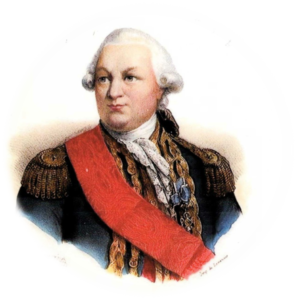
Lieutenant General of the French Naval Forces, François-Joseph Paul, Comte de Grasse is best known for his command of the French fleet at the Battle of the Chesapeake in September 1781, which led directly to the British surrender at Yorktown.
De Grasse was born and raised at Bar-sur-Loup in south-eastern France, the youngest child of Francois de Grasse Rouville, Marquis de Grasse. At the age of 11, he entered the Order of Saint John as a Page of the Grand Master.
In 1734, de Grasse became an Ensign on the galleys of the Knights Hospitaller. In 1741 at the age of 19, he entered the French Navy.
Following Britain’s victory over the French in the Seven Years War, de Grasse helped rebuild the French navy in the years after the Treaty of Paris (1763).
In 1775, France supplied American colonists with covert aid, but remained officially neutral until 1778. The Treaty of Alliance (1778) established the Franco-American Alliance and France entered the American War of Independence.
As a commander of a division, de Grasse served under Louis Guillouet, Comte d’Orvilliers at the First Battle of Ushant from July 23-27, 1778. The battle, fought off the coast of Brittany, was indecisive.
In 1779, he joined the fleet of Charles Henri Hector, Count d’Estaing in the Caribbean and distinguished himself in the battles of Dominica and Saint Lucia during 1780 and of Tobago during 1781. He contributed to the capture of Grenada and took part in the three actions fought by Luc Urbain du Bouëxic, Comte de Guichen against Admiral Lord George Rodney in the Battle of Martinique (1780).
In September 1781, Admiral de Grasse came to the aid of General George Washington and the Comte de Rochambeau’s Expédition Particulière, setting sail with 3,000 men from Saint-Domingue. De Grasse landed the 3,000 French reinforcements in Virginia, and immediately afterward decisively defeated the British fleet in the Battle of the Chesapeake. He drew away the British forces and blockaded the coast until British General Lord Cornwallis surrendered, thereby ensuring the Independence of the United States of America.
De Grasse then returned to the Caribbean, where he was less fortunate and was defeated at the Battle of St. Kitts by Admiral Hood. Shortly afterward, in April 1782, he was defeated and taken prisoner by Admiral Rodney at the Battle of Saintes. De Grasse was widely criticized for this. He was taken to London, and while there briefly took part in the negotiations that laid the foundations for the Peace of Paris (1783), which brought the war to an end. He then returned to France and demanded a court-martial. He published a Mémoire justificatif and was acquitted in 1784.
Admiral de Grasse died at Tilly (Yvelines) in 1788. His tomb is in the church of Saint-Roch in Paris.
Born: Anses d’Arlets (Martinique), September 22, 1763 – Died: Fort-de-France (Martinique), April 11, 1836
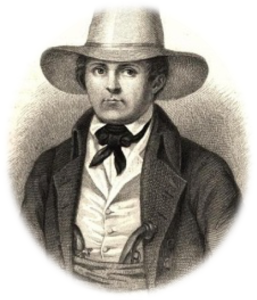
Claude Bernard Joseph de Percin de Seilh was born in Anses d’Arlets, a small village on the southwest coast of Martinique, at the entrance of the Fort Royal harbor (today Fort-de-France). His father, Charles Michel de Percin, a resident of Martinique for 50 or so years, had a plantation there. His family was originally from Seilh, near Toulouse, where the elder branch of the family still lived.
Bernard de Percin was born in the year of the disastrous Treaty of Paris that ended the Seven Years’ War but stripped France of many of its American territories – not only Canada but also Caribbean islands such as St. Vincent, Dominica, Grenada, and Tobago. In Martinique, the humiliation was strongly felt and when the opportunity for revenge arose some 15 years later, the island inhabitants did not hesitate to fight the British enemy and support the American cause.
During the American War of Independence, the command center of operations for the French naval fleet was in the port of Fort Royal. Several squadrons were based there, where they found everything needed for ship repairs, fresh water, rest, and support for the men – all organized by the master hand of the governor, François Claude de Bouillé. The governor assembled an eponymous troop of volunteers that succeeded brilliantly in retaking several British-held islands, thus dividing the British fleet in two and weakening its North American front line.
Bernard de Percin, still young at the start of the war, served beside his father, who was commander of the militia of Anses d’Arlets. One naval battle he witnessed on December 18, 1779, saw the fleet of British Admiral Hyde Parker and the French ships under Toussaint-Guillaume La Motte-Picquet at the entrance of the Fort Royal harbor. Four months later, on April 17, 1780, Percin was a militia officer during the Second Battle of Martinique, between Admiral George Rodney and the Count de Guichen. In September 1781, Percin served as a cadet in the Hainaut Infantry Regiment, which, after having fought bravely at Savannah, retreated to the island.
By October 1, 1782, Percin was a second lieutenant in the defense of Grenada, serving in the company of Lieutenant de Barre de Leuziere, until peace negotiations returned the island to the British. Later joining a regiment in Martinique, he served until 1784, when he returned to managing the family plantation, Case Navire (today’s Schoelcher, named after the French anti-slavery leader).
Percin’s early military experience came in handy when the French Revolution erupted. In 1790, he led the “Creole Vendée” of pro-royalist forces, crushing the revolutionaries under General Joseph Dugommier at the Battle of the Acajou. He was nicknamed “the Percin Cannon” after he captured an adversary’s cannon by assault on horseback, armed only with his whip. In April 1793, he and his men held out, ironically, against the island’s new governor, Donatien de Rochambeau, son of the American Revolution-era general, at a site named Camp Decided.
Married in 1784 to Victoire Duprey Dumosé de la Ruffinière, and father of 12 children, Percin died at Fort-de-France on April 11, 1836. He was named chevalier of the Royal Order of Saint Louis in 1815; chevalier of the Legion of Honor in 1823; and was a member of the private council of the king.
Some other family members also should be given their due, particularly Percin’s younger brother, Jean-Baptiste, who volunteered for the Hainaut Regiment and then served as a second lieutenant in the Foix Regiment before dying prematurely in 1791, at age 27. A more considerable career was had by Percin’s uncle, Nicolas Louis de Percin, also called Percin Laroque, who was an infantry officer. He was named commander of the island of Saint Vincent by Admiral d’Estaing after it was taken from the British in the American War of Independence. An island resident, he brought the native population to fight on the side of the French, supporting the troops of the Marquis de Bouillé. A Chevalier of the Order of Saint Louis, he was admitted to the Society of the Cincinnati in 1783.
Born: Montpellier, June 18, 1739 – Died: Rennes, September 9, 1817
Jean-Jacques de Trentinian was a grenadier Captain of the Lauzun Legion, the light troops of the “little army” France sent across the Atlantic in 1780 that tipped the scales in favor of American independence. Lauzun’s Legion derived its name from its colonel-proprietaire, inspecteur, and commanding officer Armand Louis de Gontaut, Duc de Lauzun.
Even by 18th-century standards, this underpaid unit of foreign volunteers was unconventional, to say nothing of undisciplined. Almost 1,000 strong before disbanding, they accounted for about one-sixth of the French forces but caused about two-thirds of the troubles of Lieutenant General Jean Baptiste Donatien de Vimeur, Comte de Rochambeau, commanding officer of the expedition.
The rank-and-file included subjects of 15 European countries, from Ireland to Russia and from Denmark to Hungary. Just a third of the men were French. Some 55 percent came from Alsace, Lorraine, and myriad states of the Holy Roman Empire. The officers hailed from Sweden, France, England, Ireland, Poland, and sundry German states. Among them they spoke eight languages, but by tradition and heritage the unit cursed in Hungarian. They were part of the French armed forces, yet by order of the Ministère de la Marine their command language was German. Though the Legion comprised light infantry and cavalry, they took their orders from the naval minister.
As an Infantry Colonel, Trentinian commanded the 7th Light Infantry Battalion from February 5, 1792, to July 10, 1794, when he had some 3,000 men under his command. His promotion to Brigadier General was approved by Pichegru – and the commissioners Le Bas and Saint Just – on December 9, 1793.
During the French Revolution Trentinian had to prove that he was non-noble.
In September 1793, Trentinian served as a general in the outposts of the Army of the Rhine. He fell sick in February 1794 and retired on July 10, 1794. He died on September 9, 1817, in Rennes.
Trentinian is a member of the Society of Cincinnati and was made a Chevalier of the Royal Military Order of Saint-Louis in 1783.
Sources: – Notification of Marshal de Ségur, Minister of War, by letter dated December 28, 1783 – War Archives YA 217: received January 15, 1784, by Count de Guibert, lieutenant-general – pension file 17258″


